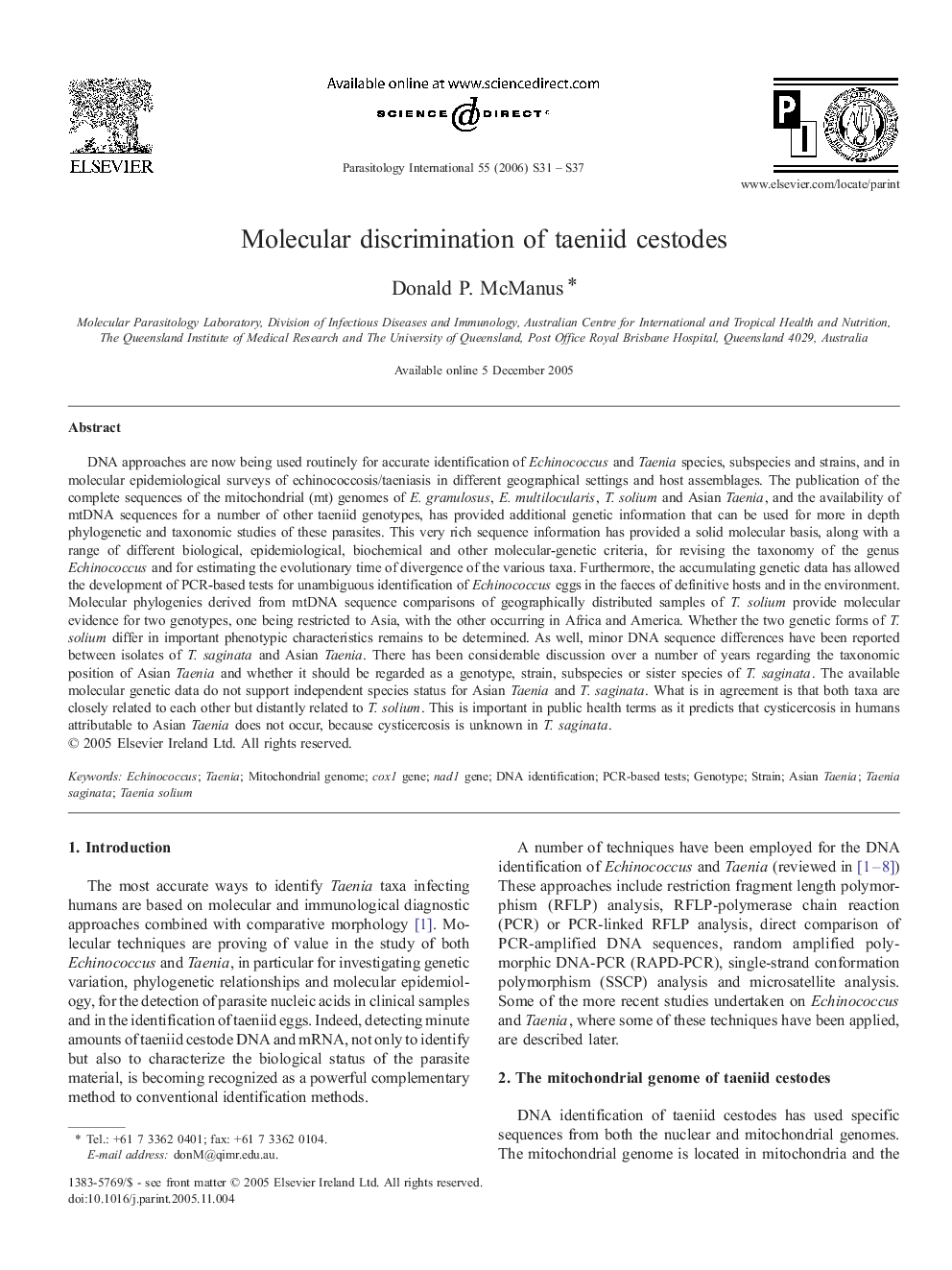| کد مقاله | کد نشریه | سال انتشار | مقاله انگلیسی | نسخه تمام متن |
|---|---|---|---|---|
| 3418431 | 1225514 | 2006 | 7 صفحه PDF | دانلود رایگان |

DNA approaches are now being used routinely for accurate identification of Echinococcus and Taenia species, subspecies and strains, and in molecular epidemiological surveys of echinococcosis/taeniasis in different geographical settings and host assemblages. The publication of the complete sequences of the mitochondrial (mt) genomes of E. granulosus, E. multilocularis, T. solium and Asian Taenia, and the availability of mtDNA sequences for a number of other taeniid genotypes, has provided additional genetic information that can be used for more in depth phylogenetic and taxonomic studies of these parasites. This very rich sequence information has provided a solid molecular basis, along with a range of different biological, epidemiological, biochemical and other molecular-genetic criteria, for revising the taxonomy of the genus Echinococcus and for estimating the evolutionary time of divergence of the various taxa. Furthermore, the accumulating genetic data has allowed the development of PCR-based tests for unambiguous identification of Echinococcus eggs in the faeces of definitive hosts and in the environment. Molecular phylogenies derived from mtDNA sequence comparisons of geographically distributed samples of T. solium provide molecular evidence for two genotypes, one being restricted to Asia, with the other occurring in Africa and America. Whether the two genetic forms of T. solium differ in important phenotypic characteristics remains to be determined. As well, minor DNA sequence differences have been reported between isolates of T. saginata and Asian Taenia. There has been considerable discussion over a number of years regarding the taxonomic position of Asian Taenia and whether it should be regarded as a genotype, strain, subspecies or sister species of T. saginata. The available molecular genetic data do not support independent species status for Asian Taenia and T. saginata. What is in agreement is that both taxa are closely related to each other but distantly related to T. solium. This is important in public health terms as it predicts that cysticercosis in humans attributable to Asian Taenia does not occur, because cysticercosis is unknown in T. saginata.
Journal: Parasitology International - Volume 55, Supplement, 2006, Pages S31–S37